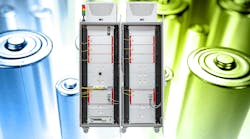Benefits from Calibrating Your Battery Tester (Download)
It’s a fact of life that all electronic test equipment must be calibrated. Typically done annually, calibration is necessary to ensure that the equipment continues to provide the performance specifications that you require—and the performance you paid for when making your equipment investment. As time progresses, the equipment will slowly drift out of specification. Calibration returns the equipment to operation within the specification.
Once the calibration period expires, you can’t rely on the battery tester to provide the performance you need as its performance isn’t specified past the calibration interval. Typically, the calibration interval is one year. When you don’t perform calibration, this drift will mean that voltage sources will no longer source the voltage to the required accuracy, giving you the wrong voltage output. Likewise, this drift will cause measurements to have additional error such that you can’t trust the readings.
